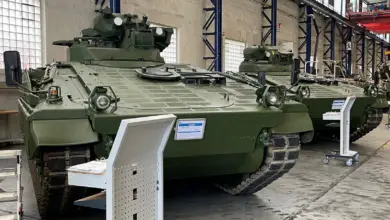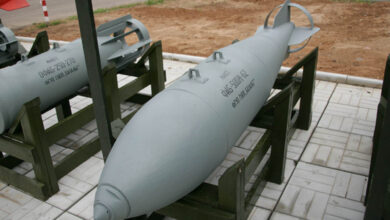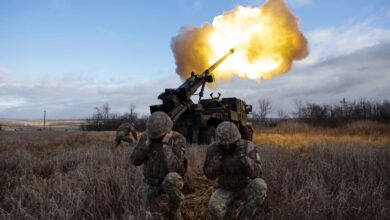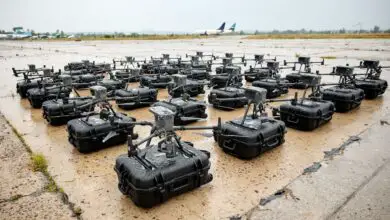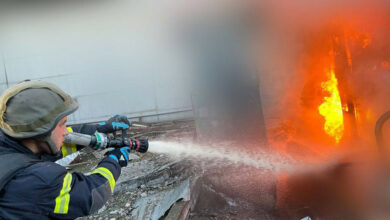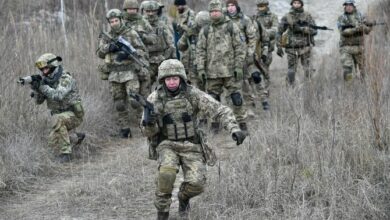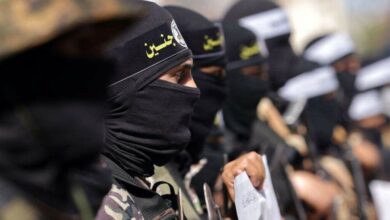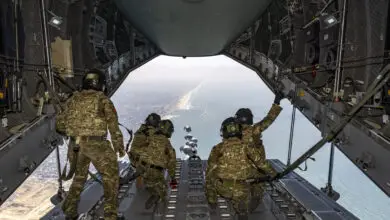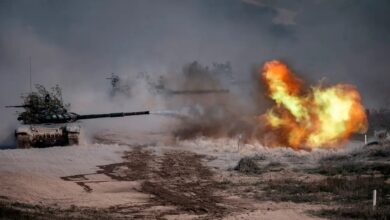
In the first phase of Russia’s attempt to forcibly acquire large swaths of Ukrainian territory, Ukraine’s military pushed back Russia’s overextended invasion force in a stunningly successful application of hit-and-run tactics combined with a robust air defense campaign that hinged on actionable intelligence shared by US and allied governments.
But Moscow learned the lessons of its initial failure and changed its strategy. Having scaled back its territorial designs for the moment, its troops have dug in.
Russia has turned to heavy artillery barrages that by some estimates outmatch their opponent’s outbound fires by ten to one. The land grab has become a piece-by-piece takeover via a grueling war of attrition, in which Russia calculates that it has the greater depth of resources to outlast Ukraine.
Now, even as Russia gains control over more contested ground, the Biden administration refuses to give Ukraine all the military aid it has requested and, more importantly, the weaponry it needs to retake the initiative and inflict more decisive blows.
It does not have to be this way.

Operation Nickel Grass
Administration officials would do well to look at historical examples where US support enabled the desired result of thwarting aggressors who presented existential threats to our allies.
The example that should be at the top of that list is the US resupply of Israel in October 1973, when much of the Arab world ganged up on the Jewish state with the Soviet Union’s help.
During the observance of Yom Kippur, the Jewish holiday consecrating the ritual of atonement, Egyptian and Syrian forces leaped into action, catching Israel off guard.
Soon, the situation looked bleak, even to Defense Minister Moshe Dayan, who, at the end of the second day, said, “there won’t be enough tanks and planes, there won’t be enough trained personnel.”
As the seriousness of the situation came into sharper focus after a week of fighting that included penetration of the Bar-Lev line, a string of defensive fortifications in the Sinai, and as the Soviets began to resupply their proxies, President Richard Nixon gave the order to “send everything that flies.” The only exception: new laser-guided munitions.
The next evening, six American C-5 cargo planes arrived in Israel, delivering military hardware at the start of the massive US Air Force airlift known as Operation Nickel Grass.
Horrified by the surprise attack and worried about what would happen next, I had arrived in Israel a few days earlier to volunteer in whatever capacity Israel’s emergency managers chose to use me, a recent US college grad not yet working full-time.
While awaiting my assignment, I stayed at the Tel Aviv apartment of a family friend. A mandatory blackout was in effect, giving the city’s usually bustling nights an eerie cast, accentuating the severity of Israel’s plight.
US Support
As someone on the ground as events unfolded, I can attest that US support came none too soon and shored up flagging spirits. Knowing that the free world’s superpower was mounting a major effort to back its beleaguered friend in the Middle East and was seemingly determined to not let it fall was a morale boost of incalculable proportions.
With the tide of war having shifted against the Arabs by late October, seven Soviet airborne divisions were placed on alert, signaling that the Kremlin was going to send its own forces.
Nixon would have none of it. He raised the US nuclear alert status to DEFCON 3, the highest peacetime level. Secretary of State Henry Kissinger thought even that was not enough, stating: “when you decide to use force, you must use plenty of it.”
Accordingly, more US military units were readied. Despite some saber-rattling of their own, the Soviets backed off.

Remarkably, this projection of American power happened while the Watergate scandal was contemporaneously unraveling the Nixon presidency. Also, the US was then staring down the whole of the Soviet Union, which, interestingly, encompassed the various republics, including Ukraine.
On top of that, Poland and the other Warsaw Pact nations were poised to join the Soviet Union in battle against the US if the Cold War turned hot.
Unlike the scenario playing out today, in which Europe supports the target of Russian wrath, in 1973 western European countries generally cold-shouldered Israel in the hour of its life-or-death crisis for fear that they would otherwise be cut off from the flow of Middle East oil.
In fact, except for Portugal, which allowed the US cargo planes to use the Lajes air base in the Azores, Europe had closed its airspace and landing sites to the American airlift.
As much as my politics differed from Nixon’s, I believe neither Israel nor I would be here today without the resupply. The lessons from that crisis are important now as Ukraine loses its brave citizen soldiers at an unsustainable rate.
Maximum Effort
From the start of Russia’s invasion on February 24 through June 1, the Biden administration has provided Ukraine approximately $4.6 billion in various forms of security assistance.
Also, Europe has made large contributions of its own. This is welcome support, but it has been gradually coming and short of the types of weapons and corresponding training needed to reverse the current dynamic, with even the transfer of antiquated MiG-29s remaining frozen into the fifth month of the conflict.
Moreover, contrary to the West’s hopes, the sanctions against Russia have yet to deter Vladimir Putin. With oil prices spiking, Russia’s coffers soar. Meantime, Europe is showing signs of buckling under the weight of the increased energy costs, and Ukraine’s economy has tanked with grain exports blockaded.

Other countries, notably India, stubbornly resist joining the West’s course on sanctions, favoring the steady inflow of Russian energy over self-deprivation.
For its part, Israel continues to walk a fine line, balancing the moral outrage over Russia’s atrocity-riddled marauding with the hard truth of Russia’s resurgent presence in the Middle East as a supporter of rogue regimes in Syria and Iran.
China, with an eye on Taiwan, waits to see if the West tracks the all too familiar trend of tiring of its security commitments only to leave distressed allies to suffer ignominious defeat.
Rather than allow this war to lapse into another dreaded forever war in which the element of time is prone to favor Russia grinding down Ukraine, Joe Biden should pull out the stops as was done during the Yom Kippur War. A maximum effort would open up a more innovative and efficacious pipeline of support to improve Ukraine’s fortunes.
Flying Tigers
That pipeline should include a clone of the Flying Tigers, the early 1940s program in which a private corporation was formed to organize volunteer fighter squadrons to help defend China against Japanese invaders.
Optimally, the group’s 21st-century incarnation would operate topline fighters, including stealthy F-35Bs with short takeoff and vertical landing capability, allowing operations from confined spaces.
Contracted out to Ukraine, these planes, repainted in Ukrainian Air Force markings, and their volunteer pilots could be a game-changer.
Fear of triggering an escalatory response should not overwhelm the impulse to do what is right. More must be done to bolster our battered ally or else Russia is likely to use its expanding foothold in Ukraine’s east to further nibble away at the prey in its teeth, leaving NATO with an emboldened wolf closer to its doorstep.
The answer for how to pull forlorn allies to victory from the jaws of defeat was demonstrated in conflicts long ago. It is time to follow those models.
 Philip Handleman volunteered in Israel during the 1973 Yom Kippur War. He is an aviation historian and the co-author most recently of Soaring to Glory: A Tuskegee Airman’s Firsthand Account of World War II.
Philip Handleman volunteered in Israel during the 1973 Yom Kippur War. He is an aviation historian and the co-author most recently of Soaring to Glory: A Tuskegee Airman’s Firsthand Account of World War II.
The views and opinions expressed here are those of the author and do not necessarily reflect the editorial position of The Defense Post.
The Defense Post aims to publish a wide range of high-quality opinion and analysis from a diverse array of people – do you want to send us yours? Click here to submit an op-ed.

